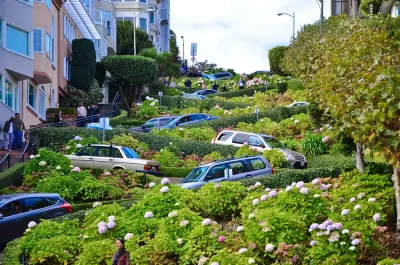National tables from the 2013 American Household Survey (AHS) are now public.

I just learned that national tables from the 2013 American Household Survey (AHS) are public. These tables contained a variety of information that I thought was at least mildly interesting. To name a few items:
*Cars are really expensive—even when gas is cheap. The average household spent $800 per month on car-related costs. (Table S-04C). Only $200 of this sum was on gasoline—which means that even if gas was free, cars would still cost $600 per month. About half of household spending was for car payments, 15 percent was for insurance, and the rest was split between parking and maintenance.
*Single family housing dominates the landscape. 64 percent of all occupied housing units (and 62 percent of units built over the last several years) are detached single-family houses (Table C-01). This is especially true for owner-occupied units: even in central cities, 79 percent of owner-occupied units are detached houses (Table C-01-00).
*Most single-family housing is not dense enough to support public transit. The average owner occupied housing unit takes up 0.3 acres, as does the average housing unit built in the last several years. Thus, most blocks probably contain about three or four units per acre; basic bus service requires at least seven units per acre to be economically viable. (Table C-02).
*Despite public controversy over high-rises, they are far more rare than low-rise apartment buildings. Only 3 percent of housing units (including only 6 percent of central-city rental housing units) are within half a block of a multifamily building with over seven stories; by contrast, 18 percent are within half a block of a multifamily building with one to three stories. (Table S-03, Table C-01-RO). Even among multistory structures in central cities, only 22 percent of buildings even have elevators (Table C-01).
*Commuting statistics underestimate public transit use. About 17 percent of occupied housing units used public transit to some extent (Table S-04-A), but only a quarter of that group always used transit to get to work or school. The rest used transit for other uses or less frequently. Transit use is especially high among central city renters—41 percent of their households included a transit user (Table S-04-A-RO), as did 1/3 of all poverty-level renters regardless of their location. New construction continues to be more auto-oriented than other housing; in units built over the last four years only 10 percent used transit. Although transit advocates often focus on the concerns of seniors, seniors were actually less likely than the general public to use transit: only 12 percent of households headed by someone over 65 used transit.
*Americans will put up with more hassle to use faster modes of public transit. 80 percent of bus riders walked to a bus stop, and 93 percent lived within a mile of transit. By contrast, only 41 percent of subway/light rail riders lived within a mile of their stop, and only 44 percent walked to a rail stop. (26 percent drove, and the rest took a bus to the train or biked. (Table S-04-B))
*Many Americans have inadequate pedestrian access to nearby blocks. Only 55 percent of American housing units have sidewalks, including only 49 percent of over-65 householders. However, new construction is actually more likely to have sidewalks—about 60 percent of units built in the last four years have them (Table S-04-C). Only 43 percent of southerners have them, as opposed to 69 percent of westerners (the North and Midwest hover around 60 percent). Bike lanes are still pretty rare; only about 14 percent of units have them.

Alabama: Trump Terminates Settlements for Black Communities Harmed By Raw Sewage
Trump deemed the landmark civil rights agreement “illegal DEI and environmental justice policy.”

Study: Maui’s Plan to Convert Vacation Rentals to Long-Term Housing Could Cause Nearly $1 Billion Economic Loss
The plan would reduce visitor accommodation by 25% resulting in 1,900 jobs lost.

Why Should We Subsidize Public Transportation?
Many public transit agencies face financial stress due to rising costs, declining fare revenue, and declining subsidies. Transit advocates must provide a strong business case for increasing public transit funding.

Paris Bike Boom Leads to Steep Drop in Air Pollution
The French city’s air quality has improved dramatically in the past 20 years, coinciding with a growth in cycling.

Why Housing Costs More to Build in California Than in Texas
Hard costs like labor and materials combined with ‘soft’ costs such as permitting make building in the San Francisco Bay Area almost three times as costly as in Texas cities.

San Diego County Sees a Rise in Urban Coyotes
San Diego County experiences a rise in urban coyotes, as sightings become prevalent throughout its urban neighbourhoods and surrounding areas.
Urban Design for Planners 1: Software Tools
This six-course series explores essential urban design concepts using open source software and equips planners with the tools they need to participate fully in the urban design process.
Planning for Universal Design
Learn the tools for implementing Universal Design in planning regulations.
Smith Gee Studio
Alamo Area Metropolitan Planning Organization
City of Santa Clarita
Institute for Housing and Urban Development Studies (IHS)
City of Grandview
Harvard GSD Executive Education
Toledo-Lucas County Plan Commissions
Salt Lake City
NYU Wagner Graduate School of Public Service






























